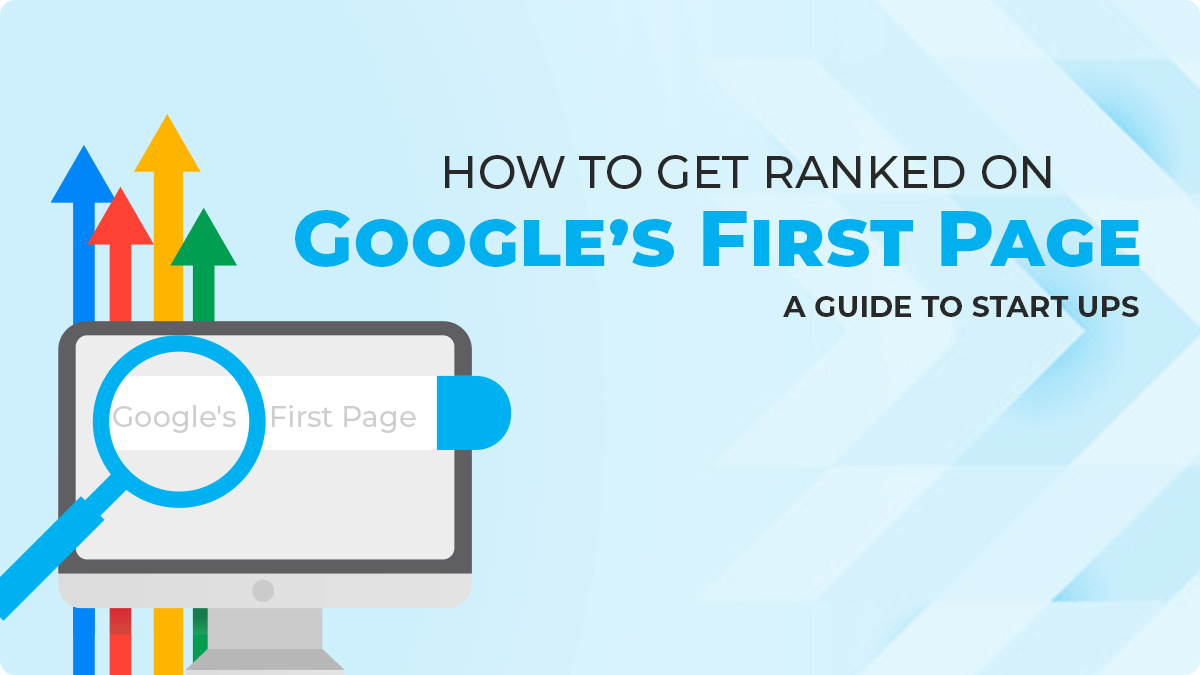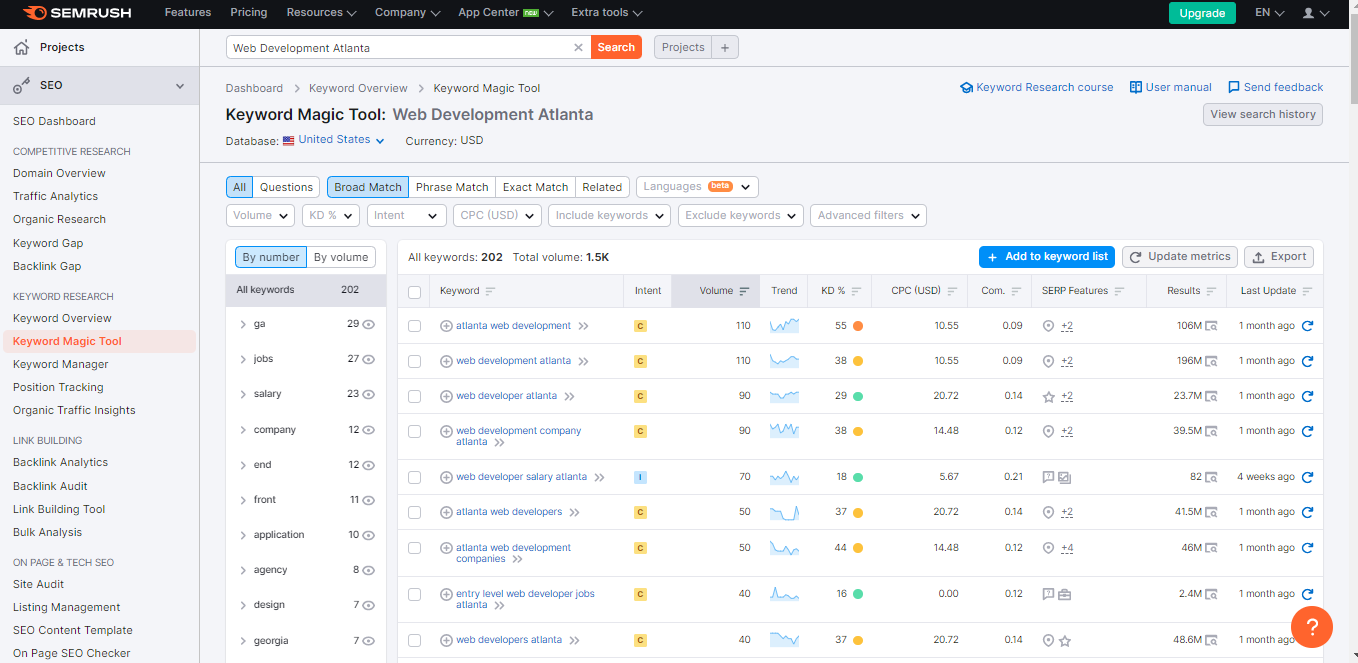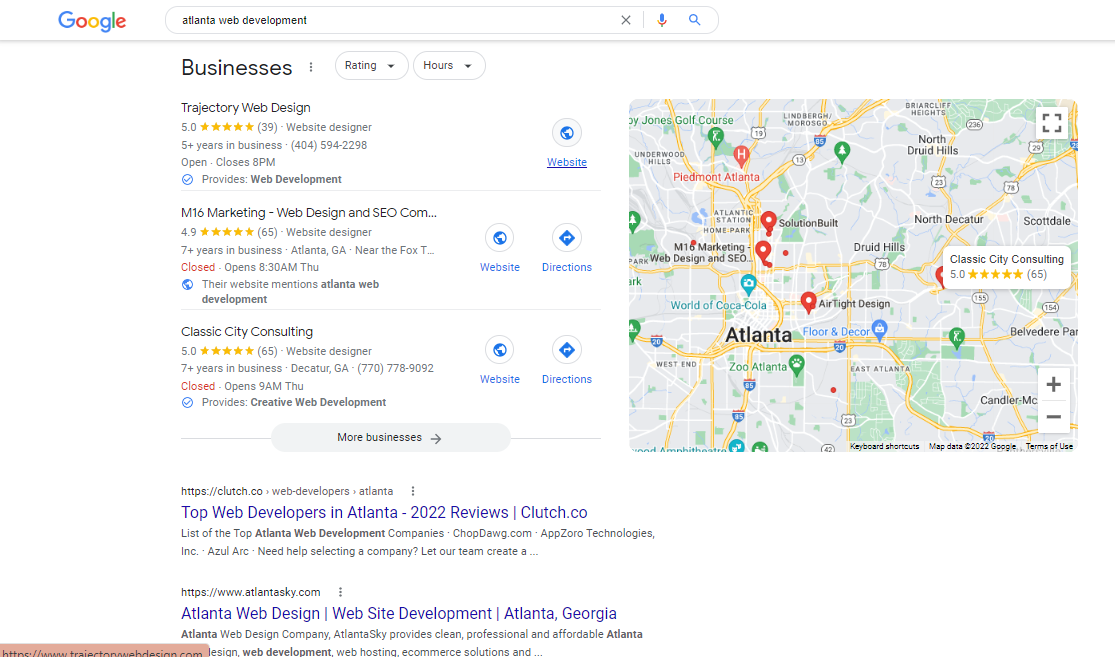Are you a startup company having trouble with your SEO tactics?
Firstly, we want to congratulate you on your new business venture. May your business prosper and grow.
The Next step is to put your SEO strategies into action in order to move up Google’s ranks. This step is often the hardest though we are here for you. As experts in the field, we understand that SEO is the heart of digital marketing. We also recognize how crucial it is for your company to be amongst the top 10 results on Google.

The question is:
How can you improve your chances of being on Google’s first page?
In this article, we’ll discuss the importance of SEO and a few comprehensive SEO techniques for assisting startup websites in improving their Google rankings.
Ready?
Let’s get started.
Why being on the first page of Google is so crucial and why everyone wants to be there
Since their potential customers are on Google’s first page, SEO experts around the globe are interested in learning how to rank there. A recent study found that the average CTR (click-through rate) for the top organic search result on Google Search is 28.5%.
According to the survey, the average CTR drastically declines after position one, with the second and third spots having click-through rates of 15% and 11%, respectively.
It shouldn’t be surprising that the tenth spot on Google has a dismal 2.5% click-through rate. The second page of search results is generally not visited by users after that.
Your website’s user engagement will rise if it ranks #1 on Google as a result of its good, helpful content.
Higher conversion rates and sales are also possible when the above elements are taken into consideration.
Since you now understand why let’s move on to the main subject of how to rank well on Google.
For a website to offer a fantastic user experience and rank higher on Google, it needs the appropriate keywords, an eye-catching design, and optimizations. Look into keywords, competing websites, and popular Google-ranking websites. Utilize what you learn to create high-caliber content and upgrade your website. Take into account Google search advertisements, maintain your Google Business Profile proactively, and abstain from any actions that could hamper your rankings.
Startups can use the following tactics to get listed on Google’s First Page:
1. Look for the search terms your clients are using
Researching keywords is the first step in developing an SEO strategy for your website. A keyword, often known as a focus keyword, is a word that best represents the information on your website or article.
You may attract your target audience to your website by using search engines to locate relevant keywords. Due to the fierce competition, ranking for keywords with only one or two words might frequently be the most difficult. Consider using long-tail keywords rather than competitive ones. Generally speaking, ranking for single words or two-word phrases is tougher than ranking for longer keywords.
An effective keyword research tool gives you access to competitive analysis in addition to feedback and volume for specific terms. For instance, a keyword research tool can display the keywords targeted by a landing page URL or website. Some of the best research tools available are semrush, Google search console, Ahrefs Keywords Explorer, Google keyword planner, Moz keyword explorer, Google Trends, QuestionDB, and AnswerThePublic.
Let’s see an example by using Semrush. Let’s say you own a web development business in Atlanta, Georgia. You can find keywords relevant to your products, services, and industry with the help of Semrush’s SEO tool under Keyword Research called Keyword Magic. You can search for a term like “Atlanta Web Development” and get a list of the most relevant keywords.

In the example above, “web development Atlanta” offers a monthly search volume potential of 110 searches on Google and a low keyword difficulty score of 38 (100 is high, 0 is low). It makes it ideal for use as the target keyword for the main page or a particular product page of your website.
Each suggested keyword’s estimated average monthly searches indicate how popular that keyword or search term is. Remember that this is subject to change over time.
To find out how popular your target keywords are at different times of the year, try a service like Google Trends. It can guarantee that you publish or update the content at the appropriate times throughout the year and will help you identify any new (or declining) trends.
2. Upload a sitemap for Google
A sitemap in XML tells Google exactly what is on your website. The XML Sitemap Generator makes it simple to create and upload one to your website.
3. Find competitors to boost your Google rankings.
Finding keywords that potential customers use in internet searches and researching competitors’ websites can help you rank higher on Google. Websites of competitors and the top search engine results pages are included (SERPs).
Using the example above (Atlanta Web Development), you can check the SERPs to see which businesses rank highest on Google Map results and which ones rank on the first page of Google results. While you can do this using Semrush, you can also do it by opening an incognito window in any web browser, then typing in your search. Below are SERPs for Atlanta Web Development.

Consider looking at the top SERPs to find out what kind of content is ranking on Google for your target keywords. You can also examine if they are contact pages, informational articles, product or service pages, or website homepages. Compare the top search results to determine the best keywords to use and the kind of content to add to your website. You can do this manually by visiting the websites of top competitors. You can note how they incorporate keywords, or you can do this more accurately using some of the most famous competitive analysis research tools mentioned below.
- SE Ranking – A fantastic blend of cost and features for a competitive analysis tool. Database for keywords and backlinks.
- Semrush – Includes more than 40 different tools, sizable backlinks, and keyword databases. They also have a localized version of Similar Web.
- BuzzSumo – Great tool for assistance with content marketing and influencer research. Furthermore advantageous for link-building initiatives.
- Brand24 – Best for researching competitors in real-time.
- Frase – Most effective for creating and optimizing content based on competitor research.
Start researching your competitors’ SEO and PPC tactics to implement their most successful ones.
4. Skyscraper Technique For Content Writing
What is the skyscraper technique, and why it works?
SEO specialist Brian Dean first used the phrase “skyscraper technique” to describe a new way to view link-building tactics.
The term fits this technique nicely because skyscrapers are instantly recognizable in each city’s skyline. A building’s ability to draw attention increases with height. However, even when there isn’t a height difference between two structures, people frequently focus on the highest one. Your content should resemble that skyscraper.
The goal is to identify the best-performing content on any given topic and then surpass it with new, superior content.
The skyscraper strategy is crucial because it enables you to create amazing content that stands out on search engine results pages and draws beneficial traffic, backlinks, likes on social media, and comments from readers.
You can use Ahref’s Site Explorer to locate content with a significant number of backlinks and referring domains.
Add a high-ranking website in your industry that is well-known for its high-quality content, then select “Best by links.” When you have a list of the pages with the most links, sort them by referring domains.
Any page with more than 50 referring domains may be a target.
Alternatively, you can enter a topic relevant to your niche in Ahref’s Content Explorer tool. Set the target language and the filter on referring domains to 50.
The top-performing articles or “skyscraper opportunities” in this category are also listed.
5. Add Your Business to Google Business Profile
A Google Business Profile is a free online business listing provided by Google (formerly known as Google My Business or GMB page). Once you register your business with Google, it will appear in local and organic search results. It also enables your business to appear in Google Maps, which frequently shows at the top of local search results. Positive reviews and a well-optimized listing can boost your Google rankings. If your company doesn’t already have a page on Google, you can either claim your current page or make a new one.
For example, the top three Google Business Profile listings and the map that appears in the search results for “web development Atlanta” are shown below. Each listing provides driving instructions, links to each company’s website, and years in operation. You will also find customer review ratings and street locations.
6. Add Your Business to Local Directories
You need to add your company to every directory relevant to your industry, including Google Business Profile, which is just one of many. Directories frequently rank in the top five positions on the first page of the Google SERPs for numerous local inquiries.
In the first set of results, for instance, if you search for “cleaning services in Atlanta,” you will see listings from local directories.
Although your website won’t immediately rank organically on the first page of Google, at least your business listing will be in the top spot.
7. Stay away from SEO tactics that harm rankings.
Negative SEO strategies, sometimes known as the “Black Hat Technique,” should be avoided if you want to rank higher on Google
Black hat SEO is the term used to describe unethical methods used to increase page ranks. Google may impose a penalty if they discover that your website is practicing black hat SEO. And if Google penalizes your website, the search engine may adjust its PageRank algorithm, lowering your website’s ranking performance or completely delisting it. So be mindful of avoiding such malpractices.
Here are some Black Hat SEO techniques that you must avoid:
- Keyword Stuffing – Using too many focused keywords in your content
- Buying links – Although purchasing links to rank higher on Google may produce immediate results, if Google finds out, you will face penalties.
- Filling Your website with Spam – (Too many Ads and popups)
- Participating in link Farming – Your business may see a drop in rank or be deindexed if google finds out that you worked with a link farm website.
- Paying for Followers
- Paying for Positive Reviews
- not adhering to certain practices while using affiliate links to monetize your website
The Conclusion
SEO is a process rather than a goal. Make sure to track your progress continuously using the best tools available on the internet. Combine it with the best possible SEO strategies, successful content marketing plans, and appropriate technologies. And there you have it! You’ve got a good plan to execute. You will slowly but surely move your website to appear on Google’s first page.
